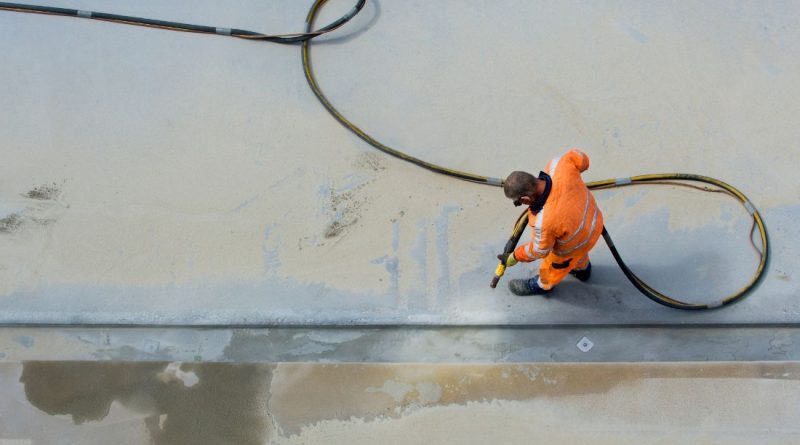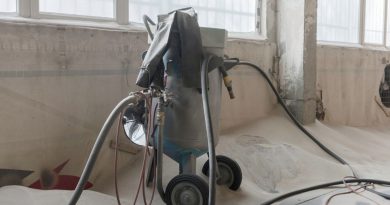Top 5 Benefits of Using Commercial Sand Blasters in Industry
Are you looking to enhance productivity and quality in your industrial operations? Investing in commercial sandblasters can be a game-changer. This article explores the top benefits of using commercial sandblasters, highlighting their role in surface preparation, time efficiency, cost-effectiveness, versatility, and safety.
Understanding Commercial Sand Blasters
Commercial sand blasters are machines designed for abrasive blasting. This process propels an abrasive material, commonly sand, against a surface to clean, smooth, or shape it. These machines come in various types, including pressure blasters, suction blasters, and automated systems, each serving unique purposes in different industrial applications.
Types of Commercial Sand Blasters for Sale
- Pressure Blasters: Use compressed air to propel sand at high speeds, ideal for heavy-duty tasks.
- Suction Blasters: Rely on a vacuum system to draw abrasive material into the blast stream, suitable for lighter tasks.
- Automated Blasting Systems: Designed for high-volume operations, providing consistent results and reducing labor costs.
Common Applications
Commercial sand blasters are widely used in various industries, including:
- Manufacturing: Prepares surfaces for welding, painting, and coating.
- Automotive: Cleans and restores vehicle parts.
- Construction: Prepares surfaces for structural repairs.
- Marine: Removes paint and rust from ships and boats.
Understanding different types and applications helps businesses select the right equipment for their needs.
Enhanced Surface Preparation with a Commercial Sandblaster
One major advantage of using commercial sand blasters for sale is their ability to provide superior surface preparation. Proper surface treatment is crucial for ensuring that coatings, paints, or other treatments adhere correctly.
Optimal Surface Cleanliness
Commercial sandblaster effectively removes contaminants like rust, old paint, grease, and dirt. This thorough cleaning ensures the surface is free from materials that could compromise the final finish.
Improved Adhesion and Longevity
A clean and roughened surface enhances the adhesion of paints and coatings. This leads to greater durability and longevity of finishes, reducing the need for frequent maintenance or reapplication.
Time Efficiency
In the fast-paced industrial environment, time is money. Commercial sandblasters significantly speed up processes that would take much longer with manual methods.
Rapid Surface Preparation
Compared to manual sanding or scrubbing, sandblasting covers large areas quickly. This efficiency allows businesses to complete projects faster and take on more work, ultimately increasing productivity.
Reduced Labor Costs
The speed of commercial sand blasters requires less labor for surface preparation tasks. This reduction in manpower leads to significant cost savings, as fewer workers are needed to achieve the same results.
Cost-Effectiveness
Investing in a commercial sand blaster can yield substantial returns over time, making it a cost-effective solution for many businesses.
Lower Material Costs
Sandblasting uses abrasive materials that are often less expensive than other surface preparation methods. Moreover, the efficiency of sandblasting means less material waste, enhancing cost-effectiveness.
Increased Productivity
The time saved by using commercial sand blasters translates directly to increased productivity. Businesses can finish projects more quickly, allowing them to take on additional contracts and increase revenue.
Versatility Across Industries
Another significant advantage of commercial sand blasters is their versatility. These machines adapt to various applications and materials.
Applications in Different Industries
- Manufacturing: Cleans and prepares metal parts before coating or painting.
- Automotive: Restores classic cars by removing rust and paint without damaging the underlying surface.
- Aerospace: Prepares aircraft components for painting and surface treatments.
- Construction: Cleans and prepares concrete and masonry structures.
Flexibility in Material Handling
Commercial sandblasters can handle many abrasive materials beyond traditional sand, including glass beads, aluminum oxide, and steel grit. This flexibility allows businesses to choose the best abrasives for their specific applications, enhancing performance and outcomes.
Improved Safety Standards
Ensuring a safe working environment is a top priority for any industrial operation. Commercial sandblasters help improve safety standards in several ways.
Reduced Manual Labor Risks
By automating the sandblasting process, these machines lessen the need for manual labor, which can be physically demanding and hazardous. Operators can work from a safe distance, minimizing exposure to harmful dust and debris.
Enhanced Dust Control
Modern commercial sandblasting equipment often includes advanced dust collection systems that capture harmful particles during the blasting process. This feature protects workers and helps maintain a cleaner work environment.
| Benefit | Description | Industry Impact |
| Reduced Manual Labor Risks | Automation reduces the need for physical labor, minimizing worker exposure to hazards. | Enhances worker safety and reduces injury risk. |
| Enhanced Dust Control | Advanced dust collection systems capture harmful particles, improving air quality. | Creates a cleaner and safer work environment. |
| Non-Toxic Abrasives | Use of biodegradable and non-toxic materials reduces environmental impact. | Supports sustainability and compliance. |
| Reduced Water Usage | Some systems utilize water with abrasives to limit dust and conserve resources. | Contributes to eco-friendly practices. |
Eco-Friendly Options
As industries become more environmentally conscious, the demand for sustainable practices has grown. Fortunately, there are eco-friendly options available in sandblasting.
Non-Toxic Abrasives
Many manufacturers now offer non-toxic and biodegradable abrasive materials that minimize environmental impact. These alternatives allow businesses to maintain effective surface preparation while adhering to eco-friendly standards.
Reduced Water Usage
Some modern commercial sandblasting systems use water with abrasives, significantly reducing dust and conserving water. This makes the process more sustainable and compliant with environmental regulations.
Choosing the Right Commercial Sand Blaster
Selecting the right commercial sand blaster is crucial for maximizing its benefits. Consider these factors when making your choice.
Assessing Your Needs
- Project Size and Scope: Determine the size of the projects and choose a machine that can handle the workload.
- Type of Material: Consider the materials you will work with, as different substrates may require specific blasting techniques or abrasives.
Key Features to Look For
- Pressure Control: Look for machines with adjustable pressure settings for various applications.
- Portability: Depending on your workspace, you may need a portable sandblaster that can be easily moved.
- Dust Collection Systems: Choose equipment with integrated dust collection for a safer and cleaner working environment.
Budget Considerations
While it may be tempting to choose the most affordable option, investing in a high-quality commercial sand blaster can save money in the long run by providing better performance and durability.
In summary, using commercial sandblasters in various industrial applications offers numerous benefits, including enhanced surface preparation, time efficiency, cost-effectiveness, versatility, improved safety standards, and eco-friendly options. By understanding these advantages and choosing the right equipment, businesses can maximize their investment and achieve superior results. Whether you seek commercial sandblasters for sale or aim to upgrade your existing equipment, investing in the right sandblasting solution can significantly improve your operational efficiency and product quality.

